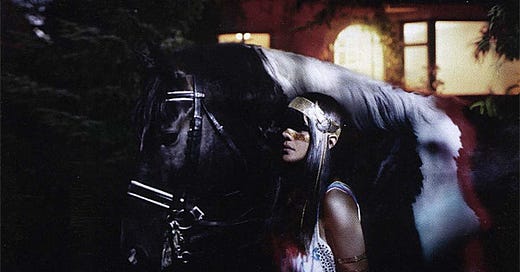Twenty-five years ago, Brighton & Hove Albion FC faced a challenging period when they played their home games at Gillingham's Priestfield Stadium. This temporary relocation occurred between 1997 and 1999, following the sale of their Goldstone Ground, which had been their home for 95 years. The move was necessitated by financial difficulties and the need to secure a new permanent home. The journey to Gillingham, over 70 miles from Brighton, was arduous for fans and players alike. This period eventually culminated in the opening of the Withdean Stadium in Brighton, marking the beginning of a new chapter for the Seagulls, which ultimately saw them rise through the leagues to the top half of the Premier League in the 32k capacity Falmer Stadium.
Some years after this, there was a counter to this; as someone from near Gillingham and a season ticket holder just after Brighton left, there were more and more bands associated with Brighton that took residence on my MP3 player. During the mid-2000s, Brighton was a hotbed of musical talent, with numerous artists and bands gaining national and international attention. Indie acts like (British) Sea Power, The Brakes, The Maccabees, The Kooks, The Pipettes, Royal Blood, The Go! Team, Blood Red Shoes, and Electric Soft Parade were making waves, contributing to the city's reputation as a breeding ground for innovative music beyond Fatboy Slim.
Bat For Lashes' distinctive style and hauntingly beautiful compositions stood out to me, and she quickly became a notable figure in this vibrant scene.
Bat For Lashes, the stage name of British singer-songwriter Natasha Khan, is a testament to perseverance’s power, much like those Brighton fans who dragged themselves to north Kent. Khan's journey began when she moved to Brighton in 2000 to study music and visual arts at the University of Brighton. Despite financial constraints, she created sound installations, animations, and performances, drawing inspiration from artists such as Steve Reich and Susan Hiller. After earning her degree, Khan worked as a nursery school teacher and continued to hone her musical skills. In her spare time, she focused on developing songs, recording demos, and performing gigs around Brighton. Her early career was marked by a DIY ethos, performing in small venues and gradually building a dedicated following. Before releasing her 2006 full studio debut Fur and Gold on The Echo Label, Khan self-released a demo album titled Who Stole Petretski's Thunder? in 2004, which she burned and distributed during her shows in Brighton.
This homemade demo included ‘Horrorshow’, a track whose piano outro would later be reused on Fur and Gold’s poignant conclusion ‘I Saw A Light’.
The demo showcased Khan's early potential and helped her establish a foothold in the local music scene. While rough around the edges, this early work laid the groundwork for her distinctive sound, blending haunting melodies with introspective lyrics. It has clearly already landed on the Bat For Lashes sound.
One advantage all those Sussex coast-based bands had was the new music showcase The Great Escape, often described as the UK's equivalent of the US's South by Southwest (SXSW), which played a crucial role in Khan's early exposure. Held each May in Brighton, this festival showcases emerging talent across various genres, providing a platform for new artists to gain recognition. Bat For Lashes' performances at The Great Escape in 2006 helped cement her reputation as a promising new artist, drawing attention from fans and industry professionals before the release of Fur and Gold later that year.
‘I Saw a Light’ is a mesmerising track that embodies the ethereal and haunting qualities evident in the demos and defining on Fur and Gold. The song opens with that delicate piano melody, creating a sense of introspection and melancholy. Khan's vocals are soft yet powerful, conveying a sense of vulnerability and raw emotion. The minimalist arrangement allows her voice to take centre stage, supported by subtle, atmospheric instrumentation that gradually builds in intensity.
The ‘I Saw a Light’ recording featured Natasha Khan on vocals, piano, and production. Josh T. Pearson contributed with intro vocals and guitar, while Will Lemon added a spoken-word intro. Tim Byford played the drums, and Abi Fry, also known for her work with (British) Sea Power, performed the viola parts, adding a rich layer to the composition.
Lyrically, ‘I Saw a Light’ delves into revelation, self-discovery, and transcendence themes. The song's narrative revolves around a moment of epiphany - maybe a literal or metaphorical light. There is a strong evocation of mystical experiences and spiritual awakening. The song’s title brings to mind ‘I Saw The Light’ by Todd Rundgren. The line “Coming through the trees” was heard plenty across 2005 as radio stations like BBC 6 Music love-bombed the Futureheads cover of Kate Bush’s ‘Hounds of Love’.
Fur and Gold, as a whole, is a mission statement in favour of Bat For Lashes' unique artistic vision. It explores fantasy, folklore, and the complexities of the human psyche, creating a rich tapestry of sound and emotion. Khan's songwriting often blurs the lines between reality and imagination, creating a dreamlike atmosphere that invites listeners into her unique world between waking and sleeping. More well-known songs from the album, like ‘Horse and I’ and ‘What's a Girl to Do?’ blend mythic storytelling with personal introspection and bright melodies, whereas ‘I Saw a Light’ leans into the mystical and the melancholic, showcasing the depth and breadth of her musical range.
The album would go on to be nominated for the Mercury Prize, as would its successor, 2009’s Two Suns—which was Khan's first of four top-ten albums in the UK1. That album also features a step up in terms of the closer, ‘The Big Sleep,’ as it features legendary avant-garde hero Scott Walker.
The recently released The Dream of Delphi is only available in digital format.




